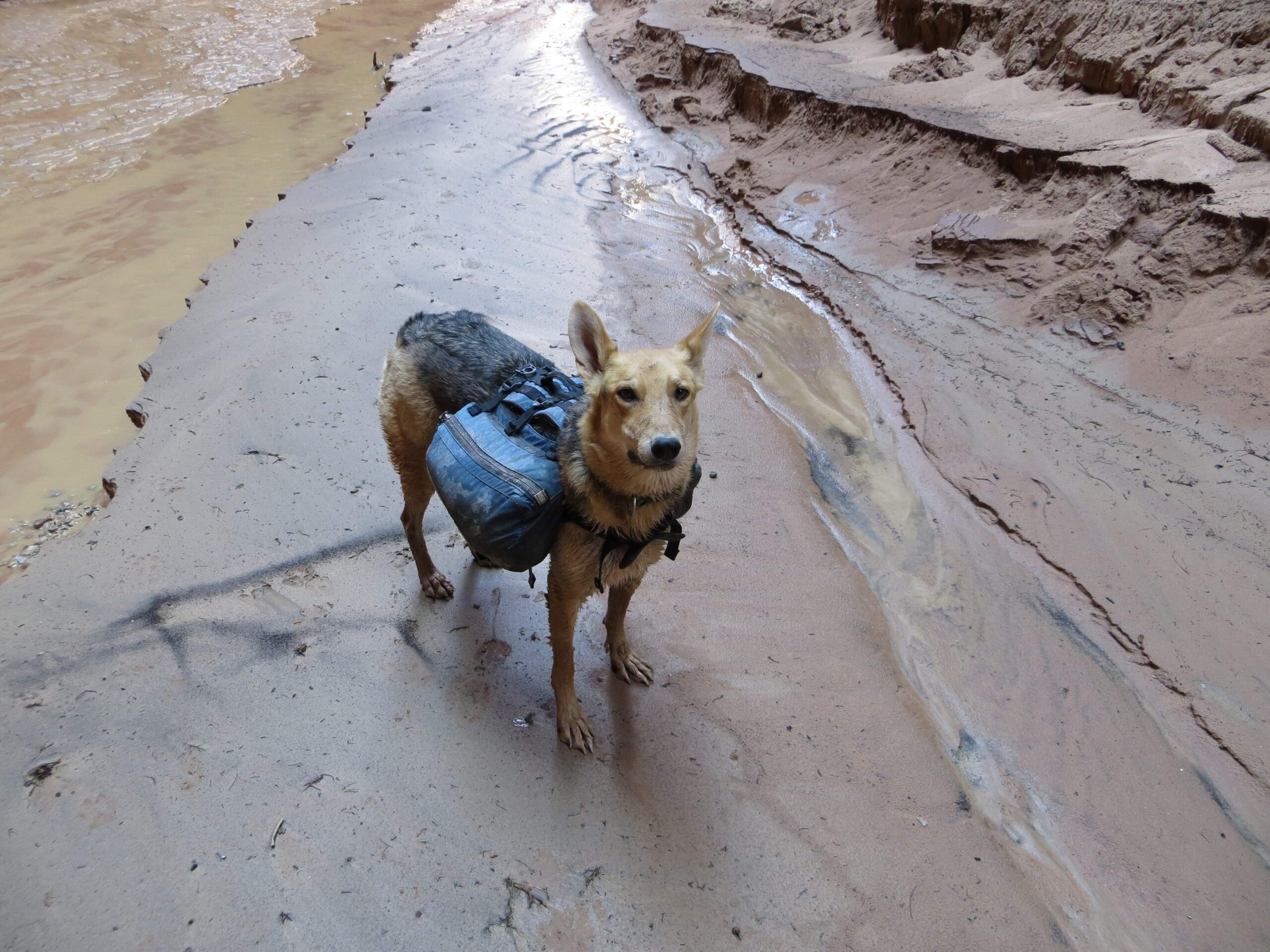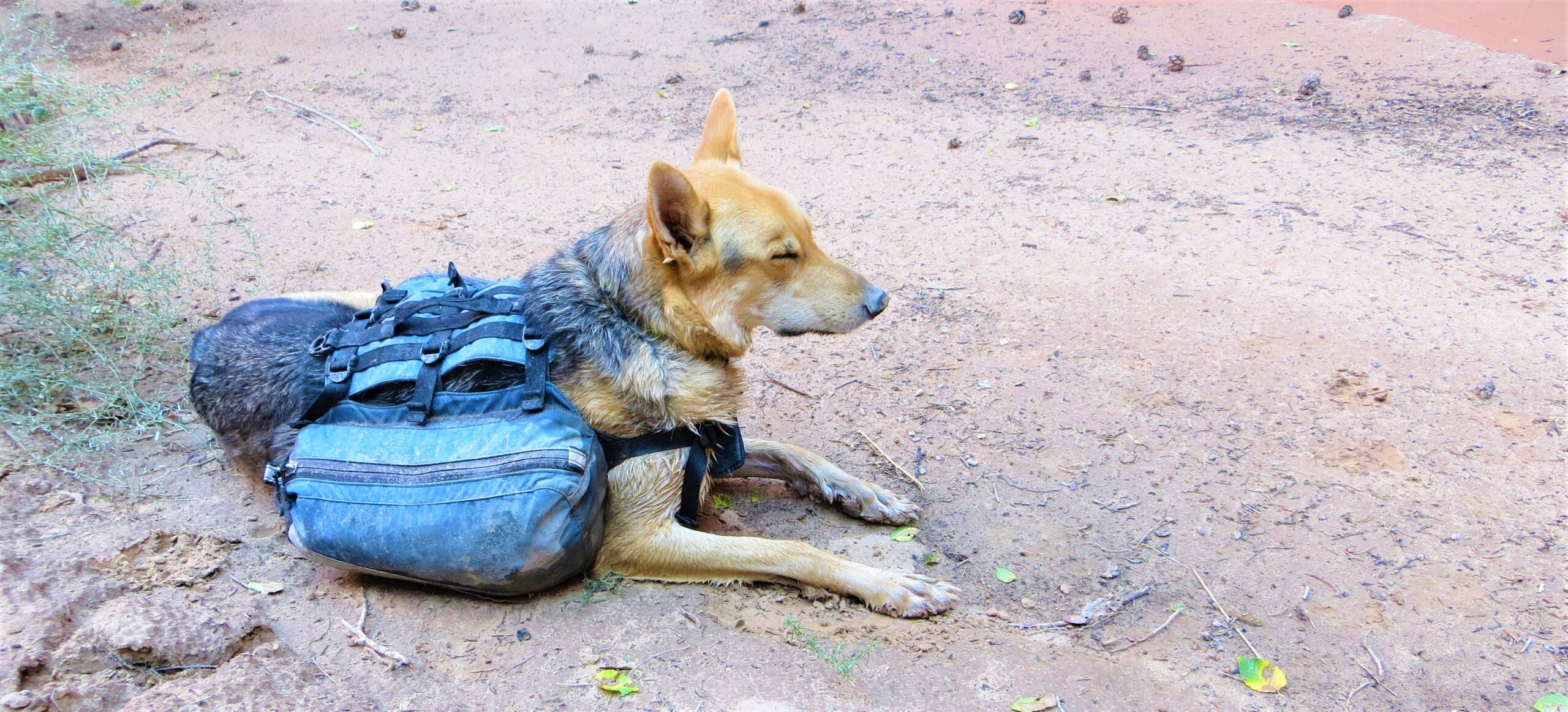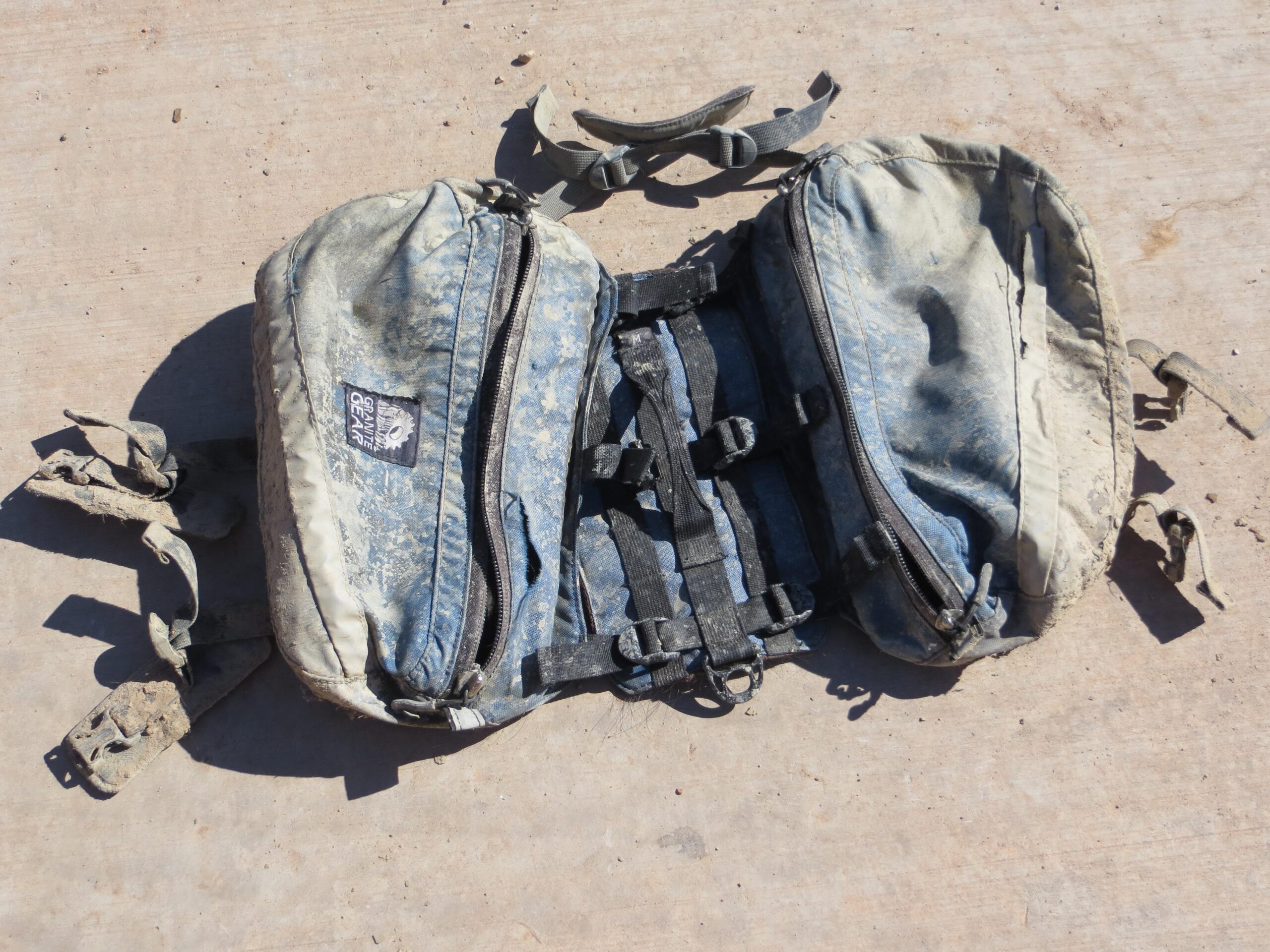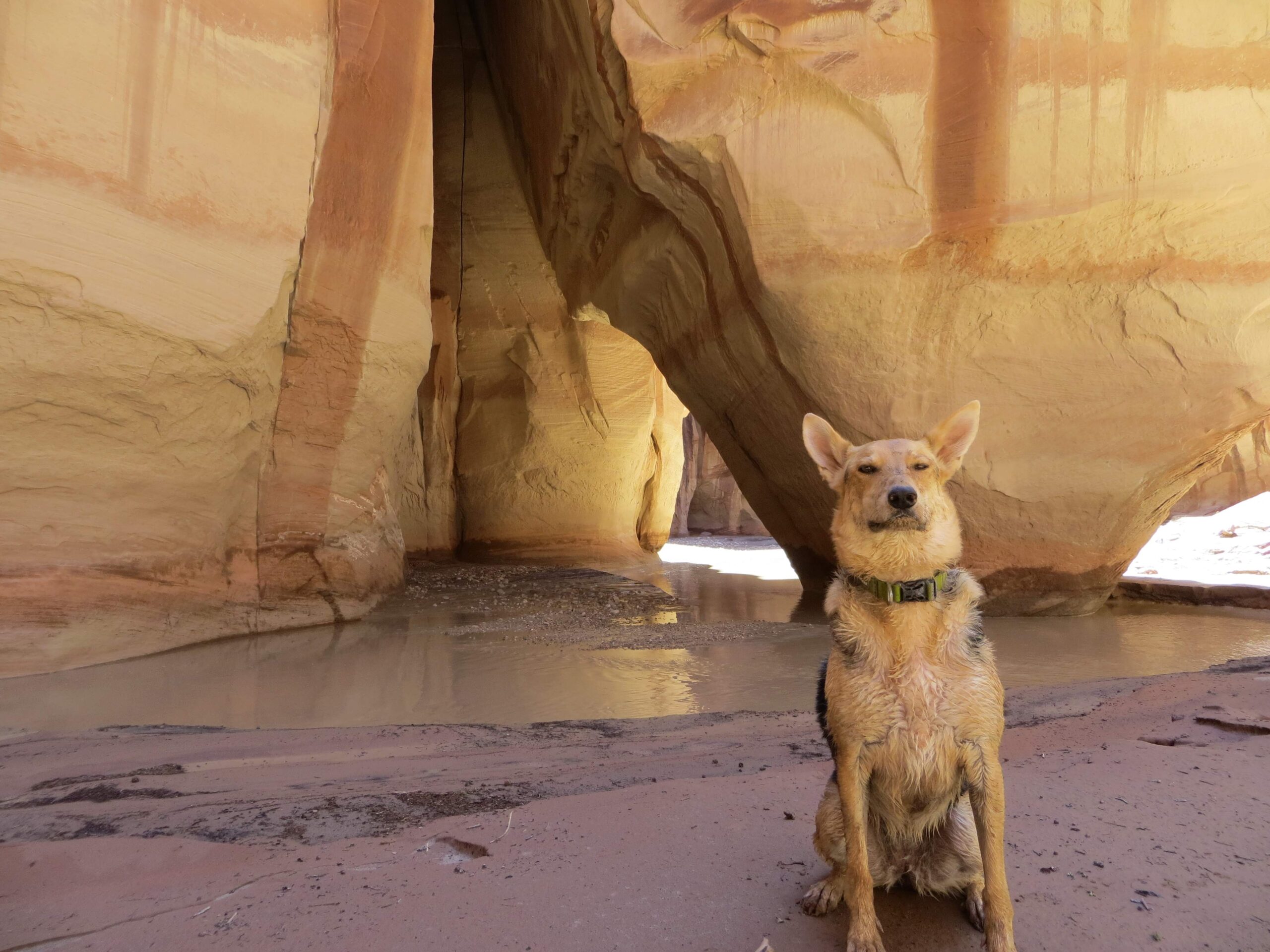If you’re reading this, you’ve probably given some thought to “bugging out.” You may even have a solid kit and plan. It’s relatively simple when you’re a single man or woman. When you start adding in children, spouses, and pets, things get complicated. If faced with the situation, you may choose to leave your dog at home to protect the house. Personally, I wouldn’t leave my dog at home. She would pee on my nice clean carpet, get into the trash, jump on the couch, and puke everywhere. If the fire or police department came by to check on the place, she would either charge them and get hurt or show them where my valuables are, I have no idea.
or woman. When you start adding in children, spouses, and pets, things get complicated. If faced with the situation, you may choose to leave your dog at home to protect the house. Personally, I wouldn’t leave my dog at home. She would pee on my nice clean carpet, get into the trash, jump on the couch, and puke everywhere. If the fire or police department came by to check on the place, she would either charge them and get hurt or show them where my valuables are, I have no idea.
By J. Bridger, contributing author
Bugging out with your dog has advantages: Dogs are good for your morale. Dogs don’t nag or complain, they’re just happy to be dogs. They provide security because their ears and sense of smell are sharper than ours. Lastly, they provide protection. If your dog is decently sized, their presence may deter someone from choosing you as their next potential victim.
Getting Ready
Now is the time to prepare your dog. Take them camping. This will give you a chance to test your bug out bag and see how your dog behaves (if you don’t already know). You should start training your pooch on the basics: Sit, stay, come, heel, and walking on a leash. Another good one is “drop it!” I can’t tell you how many times I’ve been walking my dog, and suddenly she is chewing furiously on something she’s found and swallowed it before I can ID it. Is your dog healthy enough to walk several miles? Walking or running with your dog every day is a good way to keep you both in shape. A trip to the vet to ensure your pup is up to date on immunizations is important. In some states, if your dog bites someone and does not have a recent rabies vaccine, they may be put down. If they tangle with a wild animal, it’ll be one less thing you will have to worry about. Make sure they have a collar with your information on the tag. Keep in mind tags and collars can slip off. You should consider microchipping your pet.
good one is “drop it!” I can’t tell you how many times I’ve been walking my dog, and suddenly she is chewing furiously on something she’s found and swallowed it before I can ID it. Is your dog healthy enough to walk several miles? Walking or running with your dog every day is a good way to keep you both in shape. A trip to the vet to ensure your pup is up to date on immunizations is important. In some states, if your dog bites someone and does not have a recent rabies vaccine, they may be put down. If they tangle with a wild animal, it’ll be one less thing you will have to worry about. Make sure they have a collar with your information on the tag. Keep in mind tags and collars can slip off. You should consider microchipping your pet.
Read U.S. Military’s Dog Training Handbook
Your furry companion should be on a good flea and tick medication. It’s the humane thing to do and will make your life easier too. If your dog is infested, you may be next on the bug tour. Fleas and ticks carry diseases! There are many brands and kinds of medications out there including chewables, collars, and medications you apply topically between the shoulders. You should ask your vet which medication is best in your area, as this will vary by region.
Your Dog’s Kit
You have enough to carry, so keep this simple. Don’t overload yourself or your dog. They should carry no more than 10-15% of their body weight. Keep in mind if their pack gets wet, it will get heavier.
When we take the pooch on an adventure, we measure out her normal amount of dog food, divided evenly between two 1-gallon Ziplock bags. One goes on each side  of her pack. In a perfect world, we would stow her food in dry sacks, but haven’t made the change yet. Wet food is heavy, I would steer clear of it for this application.
of her pack. In a perfect world, we would stow her food in dry sacks, but haven’t made the change yet. Wet food is heavy, I would steer clear of it for this application.
Freeze dried dog food is available but is expensive and must be reconstituted with water. If you know you’ll be near a water source, that may be a good option for bugging out. Otherwise, I’d stick to dry food for convenience sake. Water is heavy. We use two 1L Platypus bags when we won’t be near water. Bladders are great because they’re lightweight and don’t slosh around. If you’re near a safe source, your dog can drink creek water without treatment (keep in mind, your dog CAN get Giardia, but it is not common). To check if your dog is dehydrated, pinch some of their skin. It should be elastic and rebound normally. If it doesn’t, they are dehydrated. If you hear someone talk about checking skin turgor for “tenting,” this is what they are referring to.
A leash is a no-brainer. We also carry two 12’ lengths of webbing, in case we need some assistance getting the dog up or down a steep scramble. Depending on the weather, you may want to pack something for your dog to sleep on. Cold ground can suck the heat out of them. A blanket, cut down Therm-A-Rest Z-lite, or cut down Walmart sleeping pad are good places to start. Our dog has a fleece sweater, a down jacket, and a rain coat. It can get pretty chilly on the mountain, and these don’t weigh much. Your dog’s favorite toy would be a nice addition. Ideally its rugged and won’t get water logged. Our dog likes a hard bone you can stuff treats into. It keeps her occupied when we’re setting up a tarp or cooking.
There are tons of companies making dog packs. Ruffwear and  Granite Gear are our favorite. Mountainsmith, Ezy Dog, and Outward Hound make good packs. I would recommend looking for a used one on Ebay, they can get expensive. Make sure it has a beefy lifting strap and drain holes, these get heavy when wet! Our dog’s pack, bladders, leash, collapsible bowls, webbing, bedding, fleece, jacket, and raincoat weighs 5.2 lbs when dry. She weighs 70 lbs, so adding a couple pounds of food and water is well within her weight limit.
Granite Gear are our favorite. Mountainsmith, Ezy Dog, and Outward Hound make good packs. I would recommend looking for a used one on Ebay, they can get expensive. Make sure it has a beefy lifting strap and drain holes, these get heavy when wet! Our dog’s pack, bladders, leash, collapsible bowls, webbing, bedding, fleece, jacket, and raincoat weighs 5.2 lbs when dry. She weighs 70 lbs, so adding a couple pounds of food and water is well within her weight limit.
You may want to include a small survival kit in your dog’s pack for redundancy. Water treatment tablets, a fire starter, and a small pocket knife would weigh next to nothing and give you an added layer of security should you lose yours.
Canine Medical
Dogs are tough. I had a chubby little beagle mix that got bit on the face by a rattlesnake. She swelled up and laid around for a few days and was good as new. I called up the vet and she told me there wasn’t anything to do, but some Benadryl may help her feel a little better. If I got bit, I’d probably die or lose a limb.
Even though dogs are tougher than people, you should seek out medical training specific to canines. You may be able to find a course through your local REI. Even the American Red Cross lists some canine first aid classes. There is far more advanced training available but be prepared to pay for it. Techline Trauma in Pennsylvania offers a K9TC3 course (Canine Tactical Combat Casualty Care) that runs for two days and costs $850.00. If I had the time and money, I’d do this twice. TCCC is one of the most fascinating and informative trainings I’ve ever had. In the K9TC3 course you will learn canine assessment, legal considerations, how to manage penetrating trauma injuries, severe bleeding, poisoning, blunt trauma, airway emergencies, cardiac arrest, IO/IV/IM/SQ, intubation, hypo/hyperthermia, and more. The University of Colorado offers a Wilderness Emergency Canine Care class for $145. Your vet may also be able to point you in the right direction.
Read U.S. Army’s Guide to Veterinary Care of Military Working Dogs
There are a lot of canine specific first aid kits out there. You should  have a medical kit, and a lot of the same things will work on your pup (ie: bandages). That being said, you should never assume human medications are okay for dogs. Don’t give your dog ibuprofen, aspirin, or acetaminophen (Tylenol).
have a medical kit, and a lot of the same things will work on your pup (ie: bandages). That being said, you should never assume human medications are okay for dogs. Don’t give your dog ibuprofen, aspirin, or acetaminophen (Tylenol).
A lot of people say you can use hydrogen peroxide to make your dog vomit in case they ingest something poisonous. That may be so, but I’ve never met a vet who recommended this. Your dog can aspirate the vomit and develop lung problems. I trust the experts on this one.
One dog specific medical device I would invest in is a good muzzle, in case your dog is injured. They won’t like it, but it will protect you or someone caring for them.
If your dog is walking on roads or rocks, their paw pads may become sore or raw. You may consider booties or rubbing paw balm on your dog’s feet when you stop. Unless you and your dog are active, chances are you’ll both be sore if you bug out. Massaging your dog’s muscles and stretching them will help prevent soreness and stiffness. There are a ton of YouTube videos about how to stretch your dog, and it’s easier than you’d think. If your dog is older or not used to the distance, they’ll appreciate it.
Other Considerations
- Keep in mind if for some reason you hitch a ride in an ambulance, they may not take your dog.
- You should be burying or packing out your waste, but now you
 will be pulling double duty with your dog’s doodie.
will be pulling double duty with your dog’s doodie. - If your dog isn’t well trained, bugging out will be a headache. You may want to consider an obedience school or trainer.
- If your dog becomes tired or injured, you may be carrying their pack (and them). Make sure you have a comfortable way to secure it to yours before the time comes.
Conclusion
Choosing to take your pet with you or not is a choice you have to make. In most situations, I think the advantages are clear. The companionship and security they provide more than make up for double doodie duty.

2 comments
Personally, i dont like to put weight on dogs. They are not for loading stuff on the. But who like this kind of things a piece of great information for them.
It’s my first time to saw a dog with a bag on his back usually they are not comfortable with some heavy stuff on their body, that’s what I’ve noticed with my fur baby they keep on waggling, its only base on my observation, but I enjoyed seeing those picture with your pet carrying a stuff for the camp. It’s good to know that you train him. I hope it for my dog as well. I’d like to share this post perhaps the readers may love to learn from here, https://ultimatepetnutrition.com/dog-vomit/ thanks